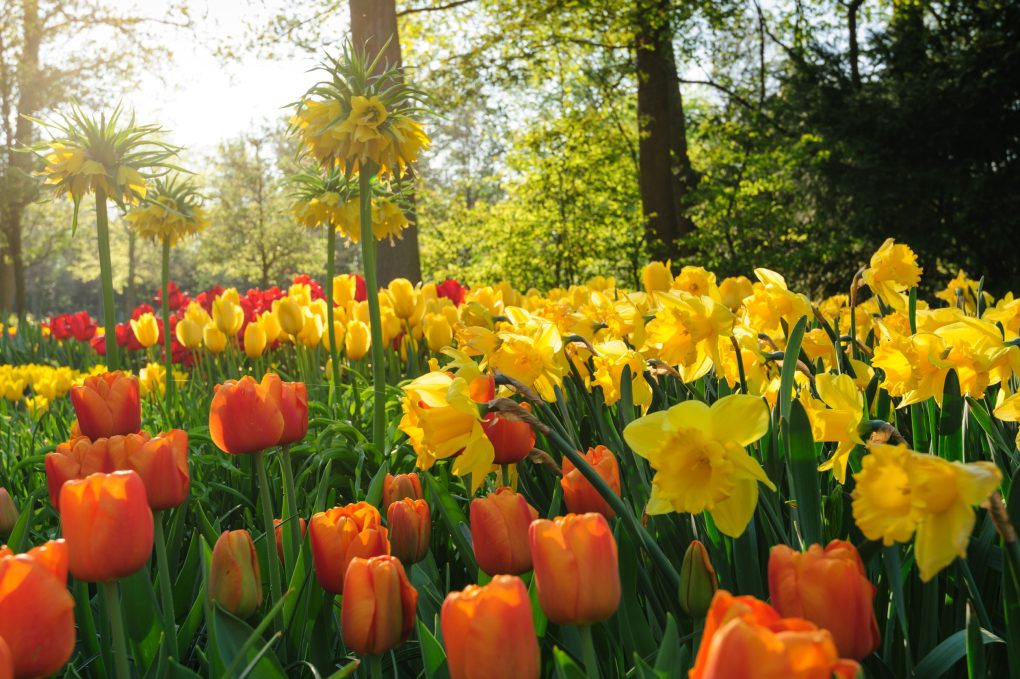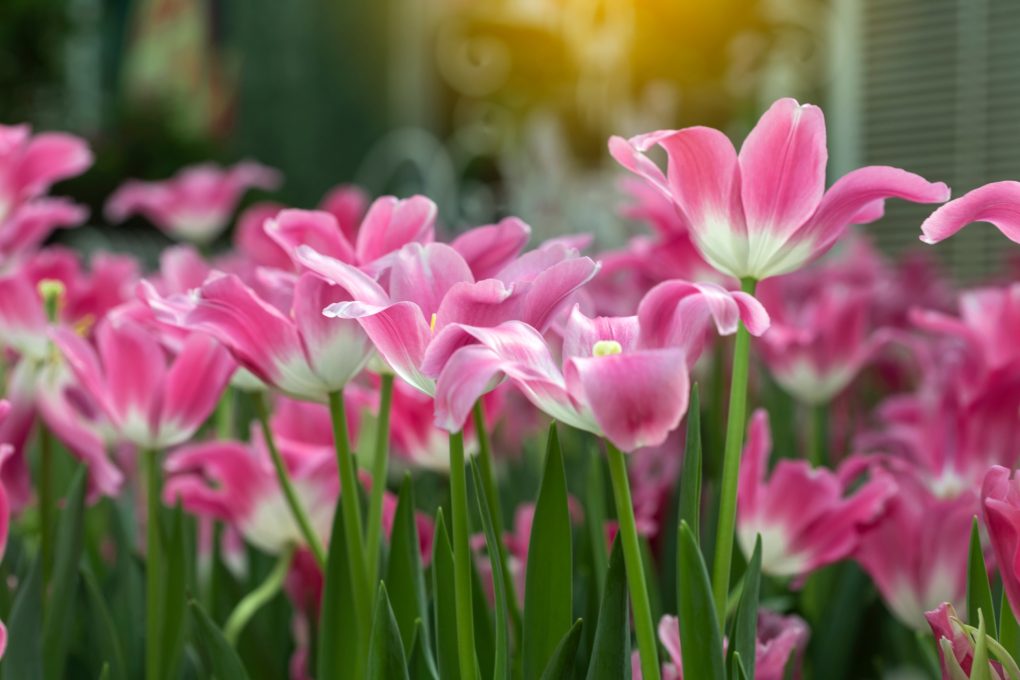Do Tulips Rebloom? The Answer Is Yes!
Tulips are perennial flowers that bloom year after year and have fascinated people for centuries. They bloom in spring when the weather is still cold, and their blooms last for weeks. Each bloom is unique, and as tulips are perennial plants, they bloom the following year again. In this blog, we will discuss how to make tulips bloom longer. Most tulips flower for around one to two weeks but last for a few days when the weather is warm. To stay in bloom longer, you must keep tulips watered and fertilized. Learn more!

Table of Contents
Are Tulips Annual or Perennial Bulbs?
Tulips are perennial bulbs that grow from spring to autumn and flower year-round, but the ability of tulips to perennialize has been weakened over time by hybridization. Due to their annual blooming habits, gardeners commonly treat tulips as annuals and plant new bulbs each year. However, tulip plants in the western mountains of the US perennialize better than those in other regions. Generally speaking, early tulips bloom from March to April, and mid-season varieties from April to May. Of course, there are variations within these typical blooming times and seasons, so it is best to consult the American Bulb Society or local garden center for more information. To help tulips perennialize, one should plant them at an appropriate depth and provide adequate sunlight and fertilizer.
How Can I Make Tulips Last Longer?
Like all plants, tulips require water to survive and healthy soil conditions to flourish. So it’s essential to provide them with adequate water and sunlight. You can also use a high-quality potting mix and add some fertilizer to the soil when planting tulips to lengthen their blooming period. Additionally, you can plant tulips in areas with mild spring temperatures between 50 to 59 °F (10 to 15 °C) to extend the duration of their bloom. Finally, you can cut off the flower heads of tulips to prevent them from going to seed, which will help them last longer. This will encourage more blooms for longer and improve your garden’s overall appearance.
Overall, providing tulips with the right conditions will help them bloom longer and produce vibrant blooms year after year.
Making the Tulip Blooms Last Longer
Yes, tulips do rebloom every year! The blooming season of tulips depends on several factors, such as the bulb’s age and how well it was cared for.

A bulb’s age is vital in determining the length of its blooming season. Newer bulbs tend to bloom longer than older bulbs. Older bulbs also have more vital blooming abilities and can bloom more frequently.
The care of tulip bulbs is also vital to their blooming ability. A bulb should be in a sunny location with plenty of water and fertilizer but not too much sun exposure. This helps them develop solid stalks and blooms that last long. Therefore, giving the bulb a chilling period in winter is crucial to bloom in spring.
Vernalization is the exposure to cold temperatures below 50°F that tulips need for blooming. This practice allows tulips to develop flower buds and stems that are vibrant and colorful. Letting tulips go to seed can also help them produce more blooms the following year. Vernalization will prompt tulips to produce fresh, healthy blooms without letting them go to seed, robbing them of the energy they need for more blooms.
Soil Mix and Fertilization
Tulips need a chilling period in winter to bloom in spring. To ensure blooming tulips, it is essential to use a high-quality potting mix and fertilizer when planting tulips. Darwin Hybrid Tulips may rebloom for several years with favorable growth conditions. To make tulip blooms last longer, they should be placed in a sunny spot and receive plenty of water.
Some gardeners prefer to force tulip bulbs to produce flowers by placing them in slightly acidic soil or under intense sunlight. This practice can be dangerous, as it can damage or kill the bulb and delay blooming. Instead, placing tulips in an area with bright light and regular watering is the best way to ensure they flower. Forcing bulbs to flower is common among commercial growers who use such methods to speed up production.
Light and Location
Tulips require full sun for optimal blooming, with at least 6 hours of bright direct sunlight daily. They should be planted in the fall when the soil temperature is around 60°F. Temperatures below 50°F are ideal for tulips, and they should be planted 6 to 8 weeks before a hard, ground-freezing frost is expected. For best results, consult a fall bulb planting chart to determine the best dates to plant tulips. These handy charts can help you decide when to plant your bulbs and which varieties to choose from. By planting tulips in the fall and caring for them throughout the year, you can enjoy the beauty of blooming flowers all year.
Watering

Tulips require consistent water to thrive. Watering your tulip plants when they are planted will help them establish quickly. After the first month, leave the plants alone until springtime, when you should resume watering. This ensures the plants have time to establish themselves and adapt to their new environment.
In addition to regular water, tulip plants also need fertilizer to flourish. A good fertilizer for tulip plants is low-nitrogen fertilizer such as well-rotted cow manure or bulb fertilizer explicitly designed for tulips. You can apply this fertilizer in the fall and spring when the peak of the bloom and the foliage becomes green again. After the blooms have passed their peak, clip off the flower heads and allow the foliage to die naturally. This will help keep the plant healthy and reduce the waste of resources.
Temperature
Tulips can withstand cold temperatures, with an extended period of cold necessary to enable them to flower. Ideal conditions for tulip growth are between 60 and 70°F. However, tulips will bloom best between 55 and 65°F. Placing bulbs in the refrigerator for about six weeks before planting is best to ensure blooming. Planting tulips in the autumn can help reduce the risk of fungal disease in warmer climates. Cold winter temperatures or wet summers can also be detrimental to tulip blooming. Planting them in locations with consistent warmth and dry weather can help ensure a successful flowering season. Finally, planting tulips away from direct sunlight can help minimize the risk of sunburns and other damage caused by intense light.
What Do Tulips Look Like After They Bloom?
Tulip leaves may turn yellow and flop over after they have bloomed. This is normal, as tulip leaves only to stay alive for a few months, but cutting them off at this point is also possible. Once the tulip blooms, the leaves should return to their standard green color and shape. Tulips may be single or double, with cup-shaped or peony-like flowers. Some tulips may flower again if given the proper care, such as having enough soil and water, fertilizer, and cold treatment over winter. Removing them and planting new bulbs in the fall may be necessary if tulips do not bloom again.
